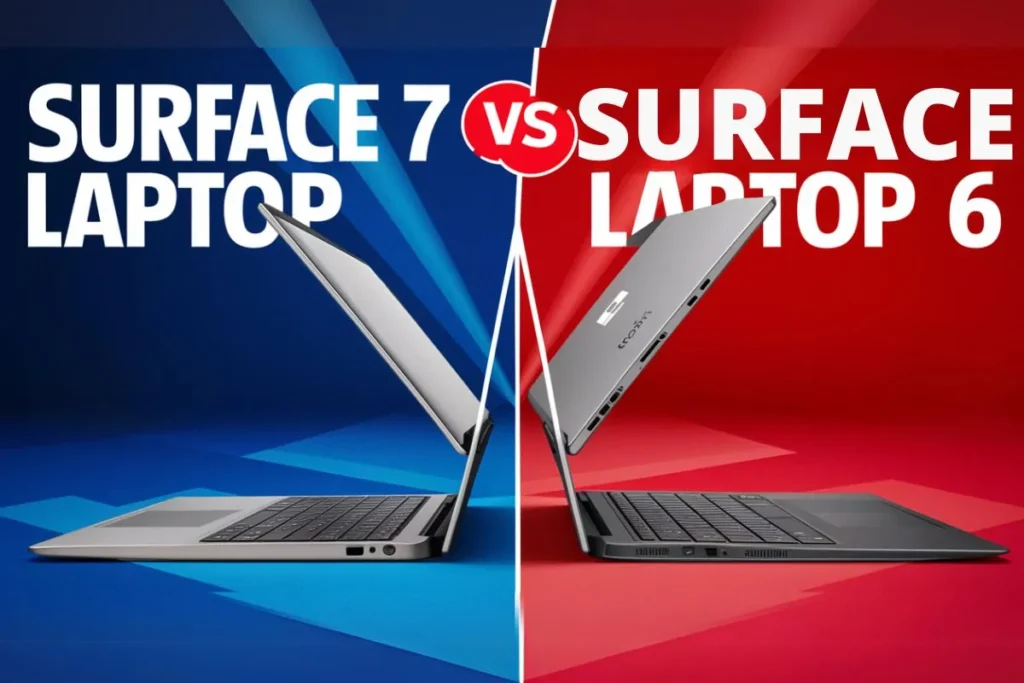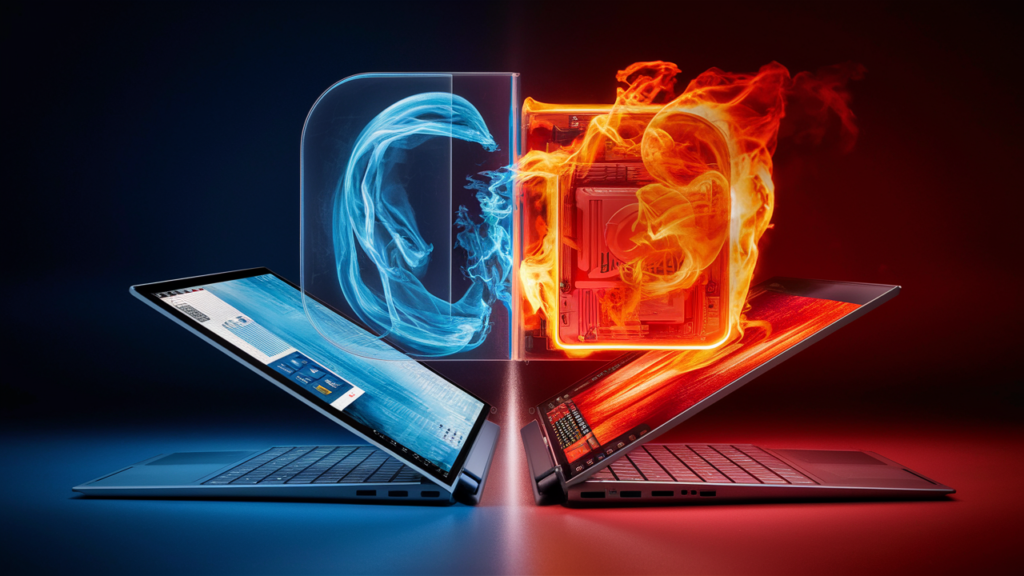Surface Laptop 7 vs Intel Laptop 6: The tech world is abuzz with the latest laptop duel: the Surface Laptop 7, powered by Qualcomm’s Snapdragon X Elite chip, versus the Surface Laptop 6, equipped with Intel’s Meteor Lake Core Ultra 7. Get ready to dive into a comprehensive comparison of these two powerhouses. We’ll dissect benchmarks, real-world performance, battery life, and more to determine who emerges victorious. Could this be the beginning of the end for Intel? Let’s find out!

A Clash of Titans: Snapdragon X Elite vs. Intel Meteor Lake
On paper, these laptops seem evenly matched in terms of RAM and SSDs. However, the Intel version comes with a hefty $400 premium. Surprisingly, the Surface Laptop 7, designed primarily for business users, delivers significant upgrades despite its lower price.

Design Face-Off: Sleek and Stylish
Upon opening both laptops, the differences become immediately apparent. The Surface Laptop 7 boasts thinner bezels and a brighter, more vivid display. It also features a superior screen and a modern magnetic trackpad that feels incredibly smooth. Additionally, it offers an extra USB-C port and a slimmer profile compared to the Surface Laptop 6.
Surface Laptop 7 Look
Intel Laptop 6 Look
Benchmark Battle: X Elite Flexes its Muscles
In a head-to-head SSD speed comparison, the Surface Laptop 6 edges out the Surface Laptop 7 in both read and write speeds. However, during the test, the Intel-based laptop’s fans revved up, indicating potential thermal management issues even under light loads.
The Geekbench 6 CPU test results reveal a significant victory for the Snapdragon X Elite. It outperforms the Intel Core Ultra 7 by a remarkable 21% in single-core and 15% in multi-core performance. This is a major win for the underdog, especially considering its lower cost.

Benchmark Results
| Test | Surface Laptop 7 (X Elite) | Surface Laptop 6 (Intel Meteor Lake) |
| SSD Read Speed | Slower | 12% Faster |
| SSD Write Speed | Slower | 42% Faster |
| Geekbench 6 Single-Core | 21% Higher | Lower |
| Geekbench 6 Multi-Core | 15% Higher | Lower |
| Geekbench 6 Vulkan GPU | Lower | 15% Higher |
| Web Browsing Speedometer | 25% Faster | Slower |
| Figma Export Time | 12% Faster | Slower |
| Cinebench CPU Temp (Max) | 96°C | 102°C |
| Battery Life (Load) | 39% Remaining | 3% Remaining |
Real-World Performance: The X Elite’s Agility
When it comes to everyday tasks like web browsing, the X Elite sprints ahead, proving 25% faster than its Intel counterpart. It also breezes through Figma web design tasks with exceptional smoothness and responsiveness, leaving the Intel laptop struggling to keep up.
In the Geekbench 6 compute test for graphics, the Intel Arc graphics outshine the Adreno X185 by about 15%, making it a better choice for graphics-intensive tasks.
Cool and Collected: The X Elite’s Thermal Advantage
Under stress, the Intel CPU gets hot, hitting 102°C, while the X Elite maintains a cooler 96°C. Not only that, but the X Elite also sips less power, demonstrating remarkable thermal efficiency. It consistently delivers smooth performance, while the Intel CPU’s clock speeds fluctuate, showcasing the X Elite’s stability.

Battery Life Blowout: The X Elite’s Endurance
The X Elite’s battery life is a game-changer. In our tests, it ended with a comfortable 39% battery remaining, while the Intel laptop gasped for air at 3%, even entering hibernation mode. This is a monumental difference, especially for users who need their laptops to go the distance.
The Verdict: Snapdragon X Elite Reigns Supreme
The Snapdragon X Elite emerges as the victor, outperforming the Intel laptop in most tasks, running quieter, and boasting a significantly longer battery life – all at a lower price. While the Intel laptop holds its own in raw graphics performance, the X Elite’s all-around performance, efficiency, and affordability make it the clear winner for most users.









